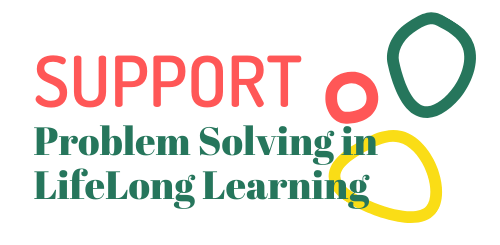Effective communication (learners)
Solving the Problem: Activities for Learning Groups
Title of activity
Before I go to sleep (Tandem methodology)
Working on the activity – Suggestions
Summary: The tandem methodology forges a partnership which enables the persons to improve their language skills by partnering two (or more) people with complimentary proficiency levels in different languages. It can be used in every lesson or in dedicated activities. In this scenario we encounter a classroom with a group of learners that face language difficulties and wish to learn the offical language of the country they are currently residing.
Objective: For the learners to be able to learn new vocabulary related to bedtime routine.
Description: This is an activity that serves as an energizer and the whole classroom can participate (alternatively it can be done into separate groups of at least five participants). The person who speaks the target language fluently (the educator or even another student) will have the role of the provider of the new vocabulary. The learners form a circle and, on their turn, they start with the phrase “Before I go to sleep” and mime the action. The new vocabulary is provided (for example, the student mimes reading a book, so the sentence becomes “Before I go to sleep, I read a book”) and they repeat the whole sentence. The next learner has to do the same but also repeat the previous action before adding their own (for instance, “Before I go to sleep, I read a book and then I take a shower”). This happens for all the students and repetition is used for memorizing. Then the educator can move on with the rest of the lesson.
Suggestions: Alternatively, the tandem methodology can be utilized by pairing up students of different levels (proficient users and beginners) for completing small tasks during the lesson (like role-playing or filling task sheets).
Learn more
Tandem methodology: https://www.tandem.net/language-exchange
Title of activity
“Facebook” for school (Edmodo)
Working on the activity – Suggestions
Summary: If the issues in communication are not due to language/speech difficulties, then you could try and build a better rapport with your students by including Edmodo in your lessons and structure the teaching around this application.
Objective: For all the students to actively participate in Edmodo by taking part in discussions, making posts, answering questions etc.
Description:. The Edmodo platform is similar to other social media platforms, like Facebook, but its use is reserved for the classroom. Educators can bring their classroom online by giving them assignments, quizzes and polls to the learners. They have unlimited options in terms of sharing digital content. Also, they can create learning groups and manage calendar events.
Suggestions: You can also make use of the Edmodo Labs in order to experience engaging and interactive edtech tools and software.
Learn more
Title of activity
Pantomime the vocabulary
Working on the activity – Suggestions
Summary: A combination of all the possible issues regarding ineffective communication can -surely- occur in inclusive environments. It may seem a daunting task to establish effective communication, but by implementing activities that rely on non-verbal communication and can act as ice-breakers/energizers will be able to “surprise” and motivative learners into active participation.
Objective: For all the students to successfully mime a word from the vocabulary they have been taught.
Description: Pantomime is a method/activity that can be used to internalize the meaning of vocabulary words. Each learner can be assigned a word to pantomime and, after everyone gathers on a circle, perform it to the rest of the class. Everyone must guess the word and, when the attempt is successful, copies the movement. Then it’s the turn of the next learner who will present another word and movement until everyone has acted out their part.
Suggestions: The educator can divide the students into small groups and assign them the creation of pantomimes for a story sequence, a history timeline, a science cycle, cause and effect, and so on. Alternatively, as an energizer activity, the learners can play the traditional Telephone Charades but, instead of a sentence to be passed on, a pantomime of that sentence must (for example, the pantomime of the sentence “I bathe my cat”).
Learn more
Pantomime: http://tedb.byu.edu/?page_id=401
Solving the Problem: Self-reflection (educator’s reflection)
Reflection section on lesson plans:
The easiest and most effective way to reflect on this aspect, is to keep some space blank on your lesson plan for reflection purposes. It should be filled, ideally, exactly after the class ends so that details are fresh in your mind. If that is not possible, it can be done later, but it has to be on the same day. Then you will be able to have the measures that you took and the reflection on the same page and it will be easy to discern what did (or didn’t) work and why.
Keeping a personal journal:
In order to be able to locate the changes in the group dynamics, the first thing that must be done is observation. Take the time during group activities to observe your learners and write down quick observations (about their attitude/participation or the end results) in your personal journal dedicating to this purpose. After the end of the lesson, write down your own reflection as an addition. Every weekend you can review the week’s entries and conclusions can be drawn from the date available. were there any changes in the group dynamics? If so, for better or for worse? What seemed to prompt them? What can you do to change the situation?
Points for Discussion with your Organisation
Suggested Training Course available online
